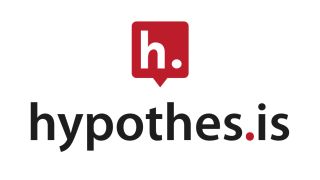Hypothes.is is a tool to make annotating the internet as easy as possible. While that's useful for teachers and students in education, the goal behind this tool is further reaching.
Hypothes.is was created as a community project with the goal of helping to make it easier for everyone to use and share educational resources. The lofty ideas behind what the internet could be are very much a real driving force for those who created and now help maintain Hypothes.is.
Quite simply, this lets you take any website and add annotations that can then be saved or shared with others.
So could Hypothes.is be of use to you?
What is Hypothes.is?
Hypothes.is is a tool that allows you to annotate anything on the internet using a helpful browser extension. It is aimed at grades six and higher but can be used by anybody in a wide range of situations from college to work.

Hypothes.is is setup as a website but the reality is you simply use that to sign-up. The real tool is in the form of a browser extension that allows you to overlay annotations on whatever webpage you visit.
You can use this to help work on a text that is online-based but can also, as a teacher, help to add more context to a website that can then be shared with students.
The idea is to help avoid the ownership issue of the web that can otherwise hinder the proper use of information available. This lets teachers and students use that information in a way that is helpful for learning, sharing, and progressing. Crucially, it does all that while remaining free and available for all to use.
How does Hypothes.is work?
Hypothes.is can be downloaded as a browser extension and then you can sign up for a free account by giving just your name and email address. Once installed and pinned, you can tap the icon at the top to access the tool. When available it will appear along the right side of the screen, folded down and available to pop out as you need.

Highlight text to get started and a small pop-up will hover next to the highlight with options to pick from in a pair of annotation types.
These annotations fall into two categories of Annotate and Highlight. Annotate allows you to write about the text whereas Highlight simply marks that section on the page.
Usefully, there is rich text formatting so you can use features such as bold or italics to add clarity to the point you are making about the text. You can even create a space with images, videos, and an option to have questions placed. You can also tag anything before posting it publicly or sharing it privately as needed.
What are the best Hypothes.is features?
Hypothes.is is so simple to use, it makes for a great tool for students of a wide range of ages and abilities. But it's also readily available so teachers can pop it into action in their own time, when they spot something that could be of use for class.

For teachers this is fantastic as it allows for a forum-style space right there overlaid on the content. So, for example, you can post a question about a highlight for students to answer. The ability to integrate images and videos allows this experience to be even richer – making the highlight a starting point for further exploration.
The dedicated education page of the company's website is full of great ideas to help teachers get started using the tool effectively. The ability to create groups and send a link to that class is valuable for teachers looking to sectionalize learning within a class or across a grade group.
By creating groups teachers are more easily able to monitor student activity as replies to questions are made, for example.
How much does Hypothes.is cost?
Hypothes.is was created as a way to enable the freedom of information on the internet with a view to helping it grow freely. As such this was created to be used totally for free.
Aside from providing your name and a verifiable email address, there is nothing else required from you to get started using this powerful tool. There aren't even any ads to worry about.
Hypothes.is best tips and tricks
Prep text
Pre-highlight text so students can pay particular attention to areas you will discuss in class.
Share live
Use current events and share with contextual annotations so students can learn to think more broadly and have something to bring on that to the lesson.
Get visual
Have students share images and videos to associate with text as a way of communicating beyond text alone.

